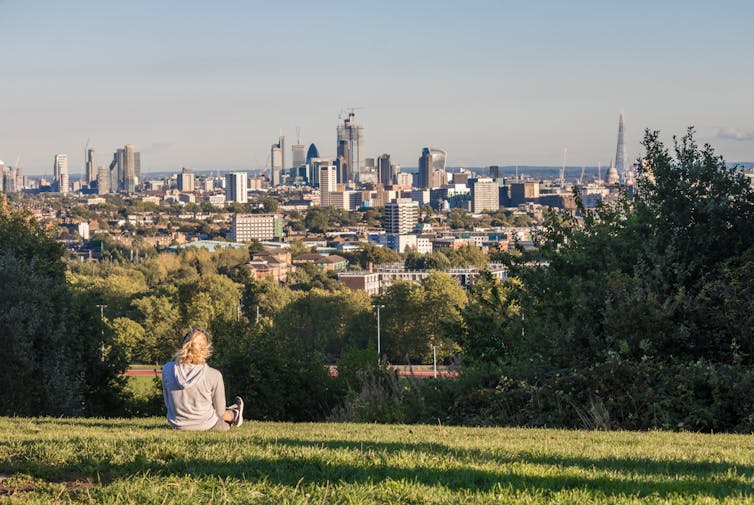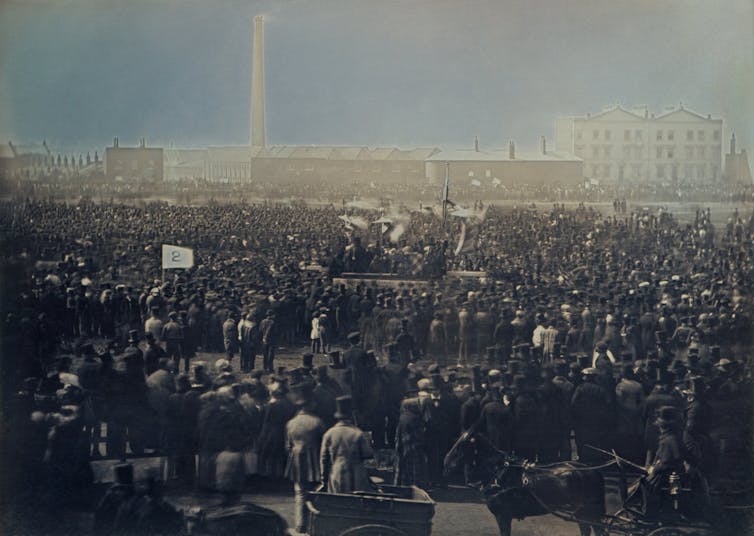Comment: Urban commons
Comment: Urban commons are under siege – here’s how to protect them
Published on: 30 July 2019
Writing for The Conversation, Professor Chris Rodgers discusses how more urban green spaces are being threatened in an age of austerity and what can be done to save them.

Urban commons are some of the largest and most iconic green spaces in towns and cities across the UK. The London commons spring to mind, including Hampstead Heath and Wimbledon Common, but many UK cities have comparable commons that are just as highly valued, such as Town Moor in Newcastle, Mousehold Heath in Norwich, or Clifton and Durdham Downs in Bristol. These wide expanses of parklands or moors are treasured places for city-dwellers, offering space to exercise, socialise and play outdoors.
Urban commons are vital for culture, health, well-being and biodiversity. Ample scientific research has demonstrated the physical and mental health benefits of having access to nature. Indeed, it’s been estimated that providing fair access to good quality green space for every household could reduce government spending on health care by £2.1 billion per year.
The historical associations of the commons also shape a sense of place and identity for local communities. For example, the Town Moor in Newcastle was the scene of large Chartist rallies in the 19th century, aimed at getting the vote for working-class men – as were other urban commons across England. And Mousehold Heath in Norwich is closely associated with Kett’s Rebellion in 1549, against the enclosure of common land by landowners in East Anglia.

Despite these evident benefits, urban green space is under threat in an age of austerity. Selling off green space in urban areas can be a quick fix for local authorities with stretched budgets, as they struggle to maintain frontline community services. In 2018, charity Locality published research showing that, on average, 4,131 public buildings and parks are currently being sold off each year by cash-strapped councils.
There is also constant pressure on legally protected green space, with regular applications to de-register village greens and areas of common land for development. A recent example is Yateley common in Hampshire, part of which was de-registered following a planning inspector’s decision in 2019 to allow an extension of facilities at Blackbushe Airport.
Are they really common?
Urban green space comes in a variety of forms – urban commons, village greens, parks and community gardens. The term “common” evokes ideas of community ownership, control and use: “Hands off our common” is a frequent battle cry when these green spaces are threatened by development.
But many commons don’t belong to the people at all. Most urban commons are not community-owned assets – in fact, they have many have different legal identities, and varying degrees of legal protection and security. Some are registered as common land and protected by law. Others have no legal protection, other than that given by the planning system – for example, if they are designated as parklands, allotments or conservation areas.
The result is that a mixed bag of legal protections and status applies to land that looks very similar and performs similar functions as recreational green space in UK towns and cities. For example, Epping Forest in London and Town Moor in Newcastle are protected by their very own parliamentary acts. Clifton Down in Bristol is a “traditional” common, registered under legislation that guarantees its status as common land. Other urban commons have much less secure legal protection – and could be more easily lost to development.
Guarding green spaces
There are several routes for securing greater legal protection for urban green space. One is to get it registered as a town or village green, under the Commons Act 2006. Land can be registered as a town or village green where a significant number of inhabitants in the local area have been using the land for “lawful sports and pastimes” – which might include dog walking, playing with children, blackberry picking and other forms of informal recreation – for at least 20 years.
If a landowner wants to voluntarily dedicate their land as public green space for the future, they can do so relatively easily, by a deed of dedication. Land registered as a town or village green will be protected from development indefinitely, unless it’s de-registered, which is a complex process.
“True” urban commons – those that have the legal status and protection of common land – are extremely precious community assets. Getting green space registered as common land is different to registering a town or village green – English law recognises several rights of common, most of which are based in ancient and customary land use rights.
The most suitable way for establishing a new common today is the ancient right of estovers, which gives neighbouring households the right to take natural produce such as fruit or berries, or fallen timber, from the land. When a landowner grants estovers, it means the land can be registered as a common, by law. And once registered as such, public access is guaranteed, as all common land is subject to the “right to roam”.
The main benefit of this approach is that it creates private property rights for members of the local community (the neighbouring households), which not only secures public access to the land, but also gives the local community a sense of ownership. Registration as a town or village green, while hugely beneficial, does not give property rights to members of the community.
Green space can also be protected through the planning system - through the local development plan, for example, or by designation as a conservation area. But this can be changed when new development proposals are considered.
It’s vital for communities to be able to champion their urban commons. That’s why a group of us at Newcastle University are leading a three-year interdisciplinary project to investigate how these valuable green spaces can be protected. It will explore the complex legal and cultural identity of the UK’s many urban commons, and develop new strategies to shape their future use in towns and cities.
The UK’s surviving urban commons are precious green spaces, but the laws that protect them are confusing, complicated and in some cases outdated. We also need to use the existing law creatively, to create and protect urban green space by getting it registered as town or village greens, or as commons. There is much work to be done by researchers, politicians and also the public themselves, to safeguard these spaces for the future.
Christopher Rodgers, Professor of Law, Newcastle University
This article is republished from The Conversation under a Creative Commons license. Read the original article.



